African American soldiers have served in every military campaign of the US since the American Revolution.[1] In 1866, after the Civil War the government established the first peacetime army for the US. As part of a reorganization, the US military created six all-Black units, including the 9th and 10th cavalry, the 38th, 39th, 40th, and 41st infantry. Three years later in 1869, those four infantry units consolidated to become the 24th and 25th infantry. These men became known as Buffalo Soldiers. (Folklore suggests that Indigenous warriors gave the Black soldiers this name due to their naturally curly hair.) In popular legend, Buffalo Soldiers were said to have been given the nickname by Plains Indians because their curly hair resembled that of the Buffalo. Another account says that the name may have come from the heavy buffalo robes they wore in the winter.
Some of these units were stationed in Oklahoma—or what was then known as Indian Territory—Texas, and Kansas during the Reconstruction period. Between 1870-1898, there were about 25,000 service members in the US Army, and Black soldiers made up 10% of the group.[2]
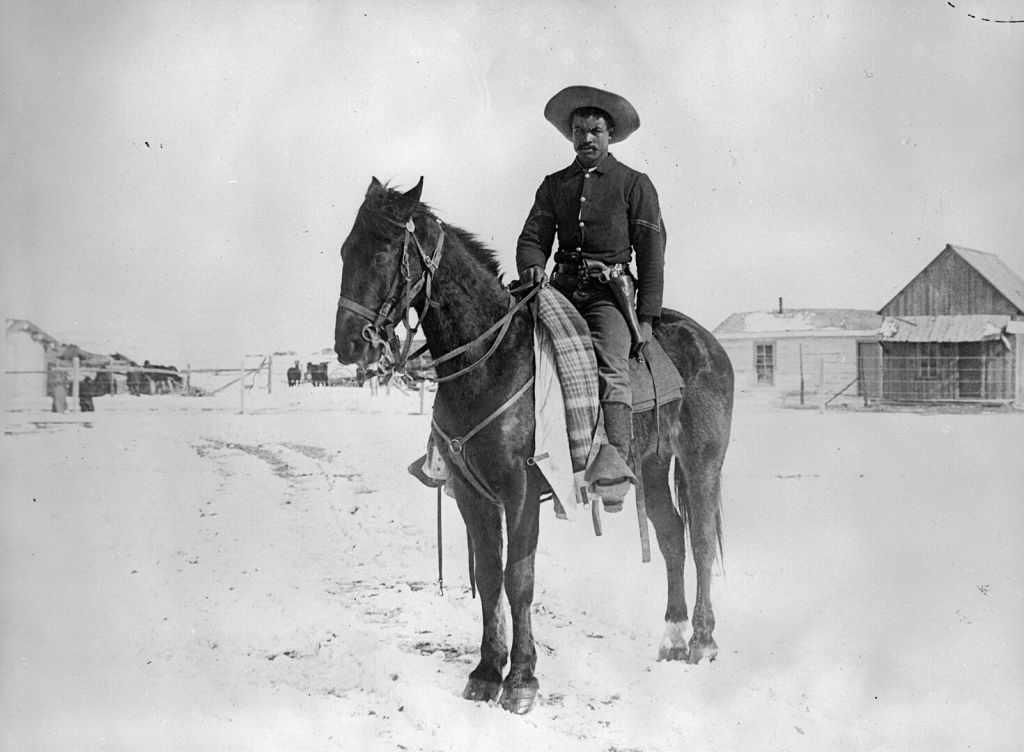
Buffalo Soldier, Corporal, in the 9th Cavalry. Snow covers the ground 1890. Denver Public Library, Public Domain
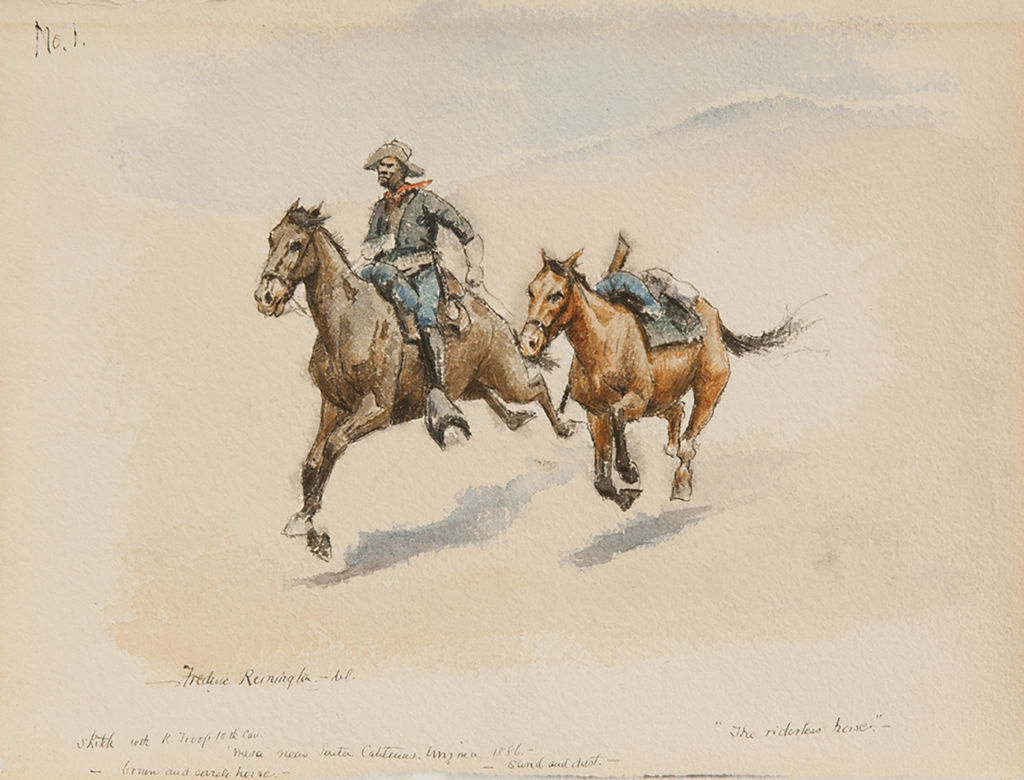
Frederic Remington, The Riderless Horse, 1886, Pencil, pen & ink, and watercolor on paper, 7 7/8 inches x 11 7/8 inches
Many of these men served during the American Indian Wars in the Southwest, which is where, in the summer of 1886, Frederic Remington engaged with a group Buffalo Soldiers in Arizona Territory while traveling as a correspondent for Harper’s Weekly with the Tenth U.S. Cavalry, Troop K. After that first encounter, Remington would produce several dozen artworks depicting Black soldiers.
One such artwork is currently on display in our current exhibit, Remington and Russell in Black and White, depicting a Buffalo Solider jumping onto a horse.
This drawing is one of three images of horse acrobatics featured in an 1898 Harper’s New Monthly Magazine article, “The Essentials at Fort Adobe,” written and illustrated by Remington. The Fort Adobe he refers to in the article is actually Fort Robinson, Nebraska, a military post established in 1874, and his title was likely drawn from the adobe barracks that were built in 1887 to house the officers stationed there. In 1885, the Buffalo Soldiers who had served in the Civil War and American Indian Wars were assigned to Fort Robinson, and Remington featured them in the paintings and drawings made to accompany the article.
Remington’s account of his time at the Fort mostly records the routine daily drills and boredom of garrison life. The monotony is broken when Remington notices a soldier jump over a horse. He then sees a soldier, “who ran with the mincing steps of an athlete toward his horse, and landed standing up on his hind quarters, whereupon he settled down quietly into his saddle.” Other illustrations accompanying this text feature scenes the artist witnessed of “Horse Gymnastics.”
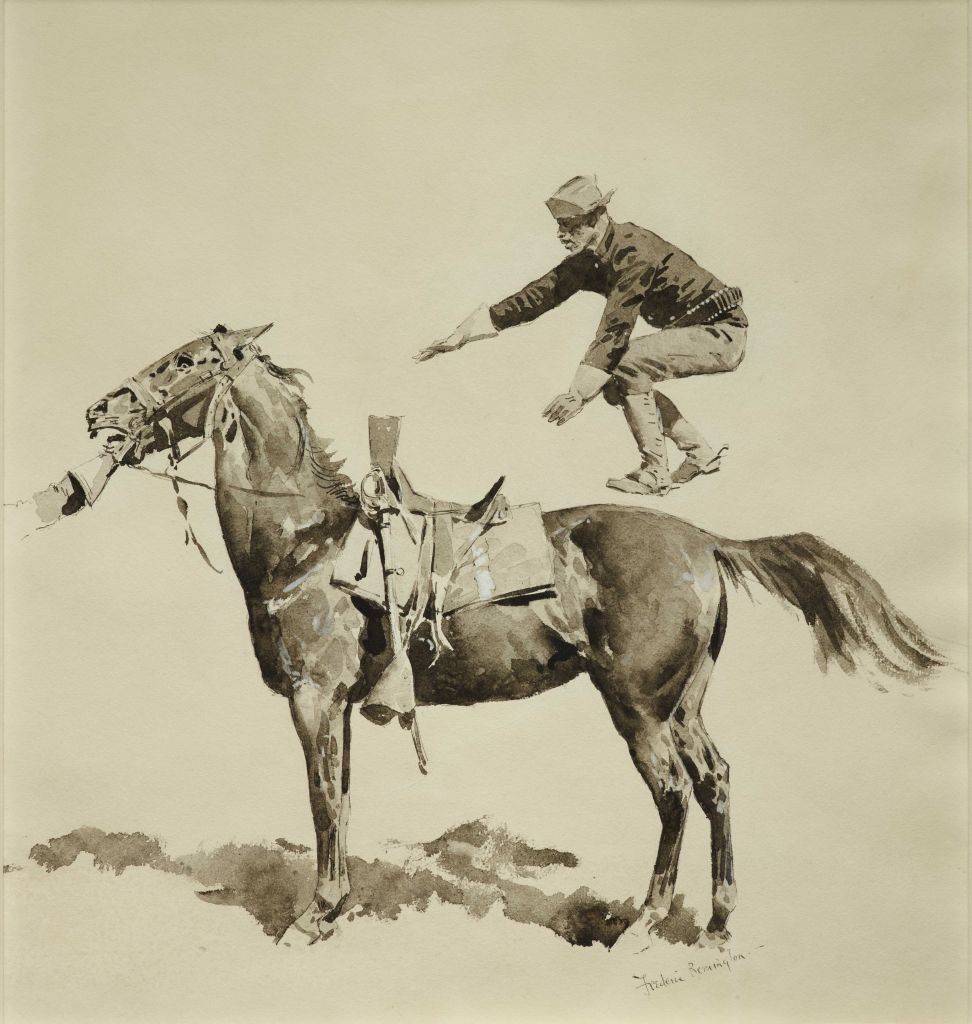
Frederic Remington, Jumping on to a Horse, ca. 1896, ink wash drawing on paper, Private Collection
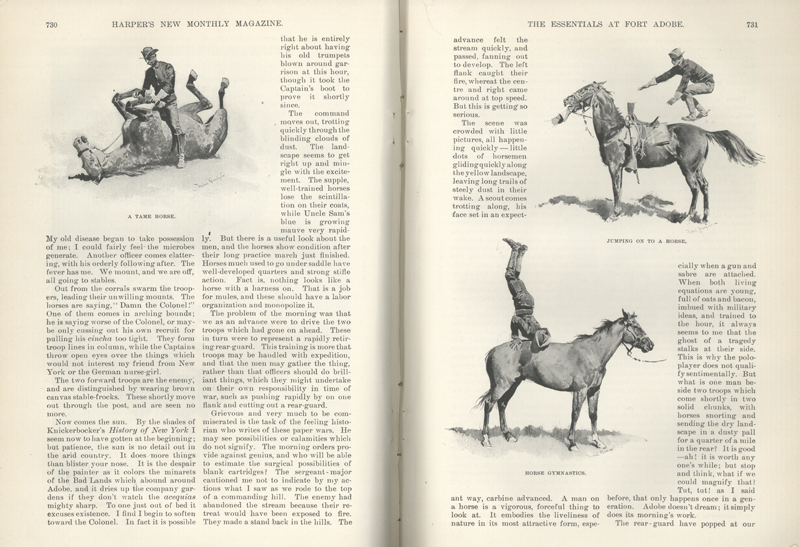
Frederic Remington, “The Essentials at Fort Adobe,” Harper’s New Monthly Magazine, April 1898, pp. 730-731, half tone, image courtesy of Harper’s Magazine
In addition to military campaigns, Buffalo Soldiers served other roles on the Western frontier, like building infrastructure and escorting the US mail. Later members of the Black troops become some of the first national park rangers stationed in California. In 1899, Buffalo Soldiers from Company H, 24th Infantry Regiment briefly served in Yosemite and Sequoia National Parks before the term “park rangers” was ever coined by the creation of the National Park Service in 1916.[3] They protected the national parks from illegal grazing, poaching, timber thieves, and forest fires.
Speaking of forest fires, remember Smokey Bear? Buffalo Soldiers left their mark in many ways, including their hat, known today as the Smokey Bear hat. The campaign hat is a broad-brimmed felt hat with a high crown pinched symmetrically at four corners, called a Montana peak or “pinch.” In many photographs of Buffalo Soldiers, serving both in the national parks and beyond, viewers will see the men wearing this iconic hat.
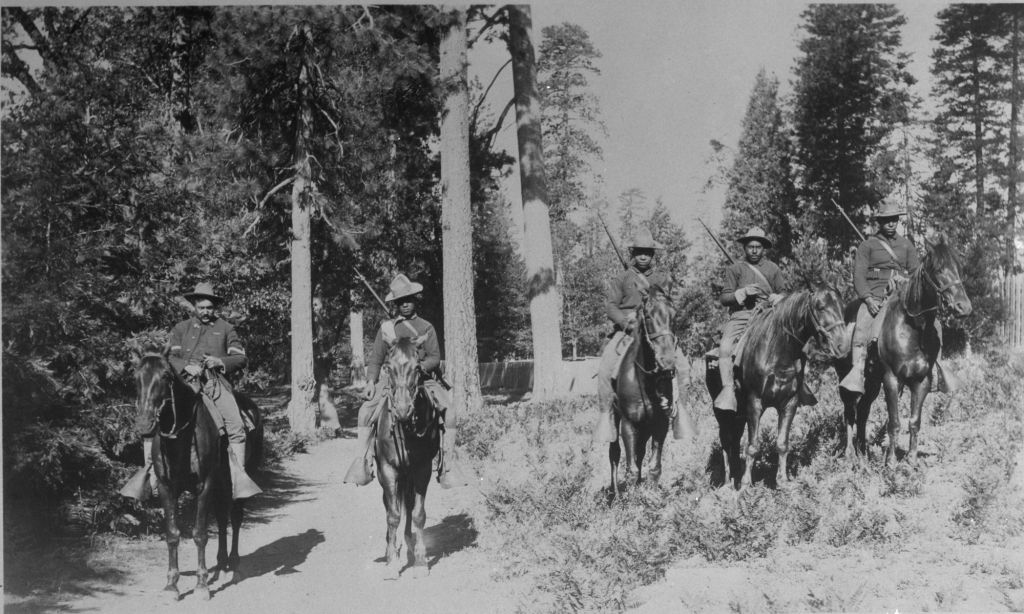
In this 1899 photo, Buffalo Soldiers in the 24th Infantry carried out mounted patrol duties in Yosemite. National Park Service, Public Domain.
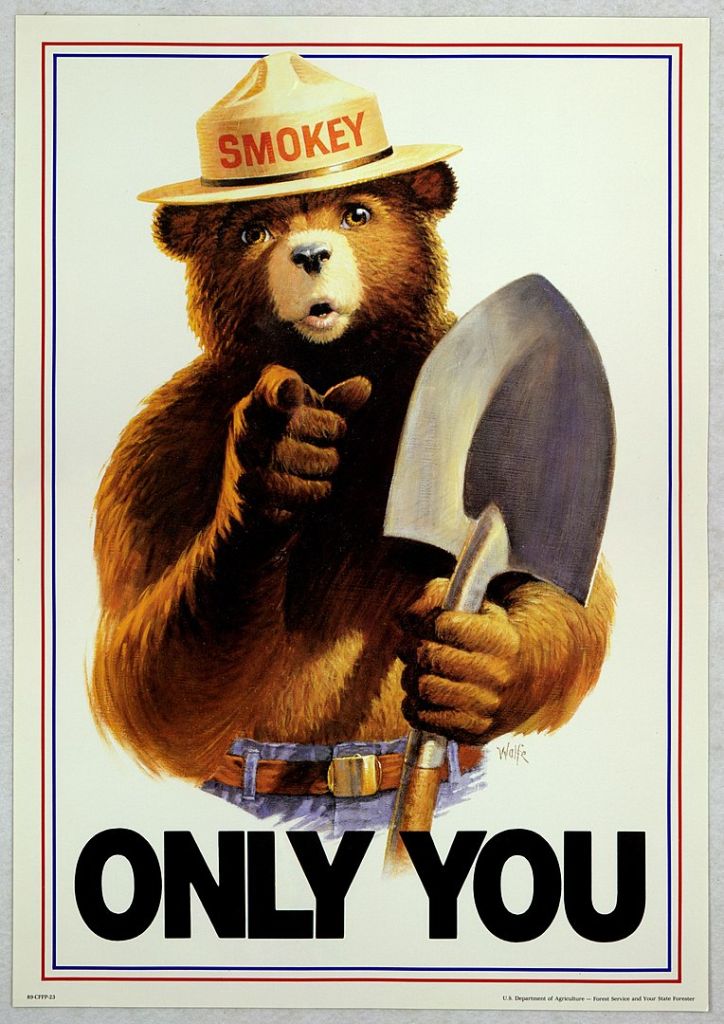
Smokey Bear poster, 1989. Public Domain
Black soldiers continued to serve their country into the early 20th century, but it wasn’t until the Korean War, after President Harry Truman desegregated the military in[SW1] 1948, that Black and white troops served together in integrated units for the first time.
Today, there are many monuments and museums around the country that honor the history and contributions of the Buffalo soldiers.
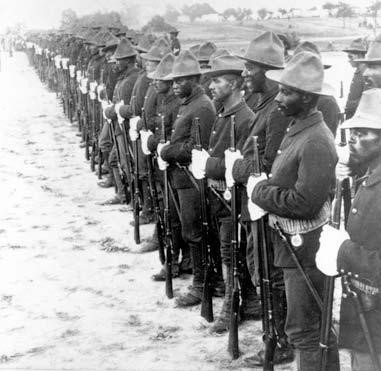
Buffalo soldiers of the 10th Cavalry after the Spanish-American War, Cuba. Library of Congress. Public Domain
[1] John Langellier, Fighting for Uncle Same: Buffalo Soldiers in the Frontier Army, https://www.c-span.org/video/?423844-1/buffalo-soldier-regiments
[2] Frank N. Schubert, Black Valor: Buffalo Soldiers and the Medal of Honor, 1870–1898, (Lanham, Maryland: Rowman & Littlefield, 1997), 4–5.
[3] Shelton Johnson, Invisible Men: Buffalo Soldiers of the Sierra Nevada, Park Histories: Sequoia National Park, National Park Service. https://www.nps.gov/parkhistory/hisnps/NPShistorians/invisiblemen2.pdf



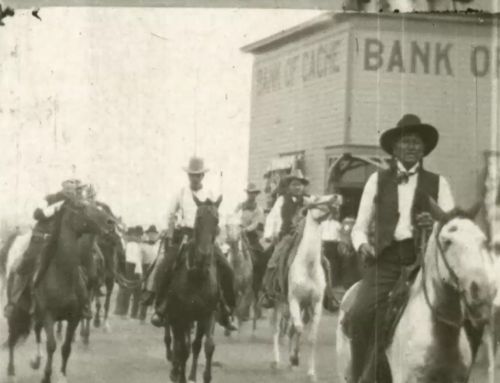
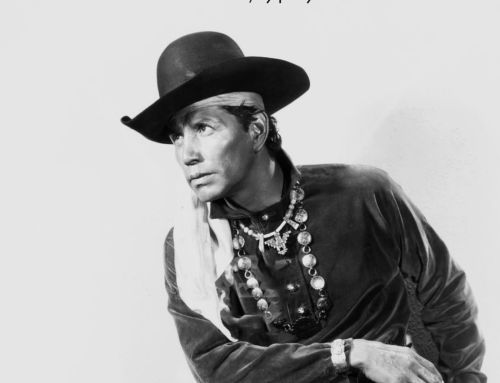
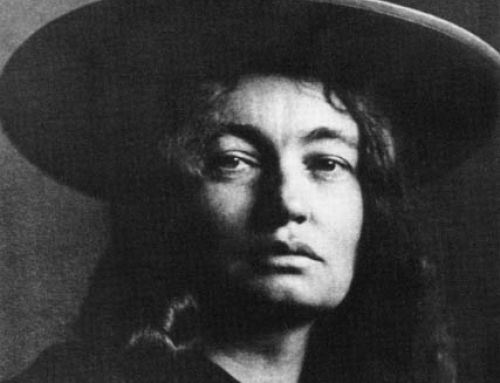
Leave A Comment